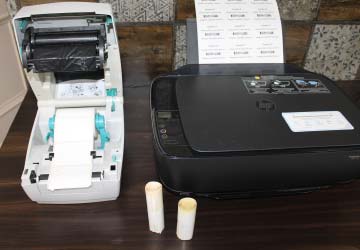There are several types of barcode printers available on the market like direct thermal, thermal transfer, inkjet, laser, and mobile printers, each has its own unique features and capabilities. Each type of printer uses different materials or substances like heat, ribbon, liquid, toner, etc, to create barcode images.Here is some detailed information about the most common types of barcode printers:
